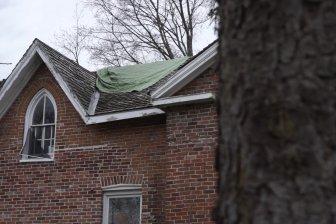Rescuers using drones resumed the search Tuesday for some 13 missing hikers following an avalanche in northern Italy that killed at least seven people and is largely blamed on rising temperatures that are melting glaciers.
After rain hampered the search on Monday, sunny weather on Tuesday allowed helicopters to fly more rescue teams to the site on the Marmolada glacier, east of Bolzano in the Dolomites mountain range.
A large part of the glacier broke off Sunday, triggering an avalanche that sent torrents of ice, rock and debris down the mountainside toward unsuspecting hikers. At least seven people were killed and an estimated 13 are still missing, authorities said.
Read more:
14 Hikers Still Missing After Deadly Italian Glacier Avalanche
The ground remains so unstable that rescue teams stood to the side and used drones to try to find survivors while helicopters searched overhead, some using equipment to detect cellular pings. Two rescuers remained at the scene overnight and were joined by more rescuers Tuesday morning.
“We are continuing the work of the drones to find survivors, working in the areas that we were unable to monitor yesterday,” Matteo Gasperini, of the Alpine Rescue service, told Sky TG24. “We will try to complete the job of monitoring the entire site.”
A view taken from a rescue helicopter of the Punta Rocca glacier near Canazei, in the Italian Alps in northern Italy, on Tuesday, July 5, 2022, two days after a large part of the glacier calved, sending an avalanche of ice, snow, and rocks on hikers.
AP Photo/Luca Bruno
Prime Minister Mario Draghi, who visited the rescue base in Canazei on Monday, acknowledged that avalanches are unpredictable but that the tragedy “certainly depends on the deteriorating weather situation.”
Italy is in the midst of an early summer heat wave, coupled with the worst drought in northern Italy in 70 years. Experts say there was unusually little snow during the winter, further exposing glaciers in the Italian Alps to summer heat and melt.
“We are then in the worst conditions for a detachment of this type, when there is so much heat and so much water running in the base,” said Renato Colucci, of the Institute of Polar Sciences of the state National Research Council, or CNR. “We still can’t figure out if it was a deep or shallow slide, but the size seems very large, judging from the preliminary images and information received.”
The CNR has estimated that the Marmolada glacier could disappear completely in the next 25-30 years if current climate trends continue, given that between 2004 and 2015 it lost 30% of its volume and 22% of its surface.
Winfield reported from Rome.
© 2022 The Canadian Press


